Related Research Articles

James Fenimore Cooper was an American writer of the first half of the 19th century, whose historical romances depicting colonial and indigenous characters from the 17th to the 19th centuries brought him fame and fortune. He lived much of his boyhood and the last fifteen years of life in Cooperstown, New York, which was founded by his father William Cooper on property that he owned. Cooper became a member of the Episcopal Church shortly before his death and contributed generously to it. He attended Yale University for three years, where he was a member of the Linonian Society.
Jean-Baptiste Honoré Raymond Capefigue was a French historian and biographer.
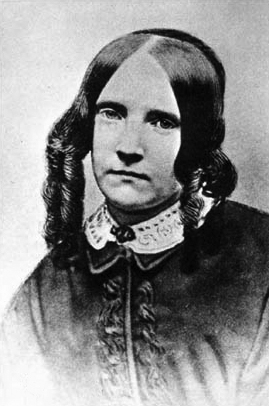
Susan Augusta Fenimore Cooper was an American writer and amateur naturalist. She founded an orphanage in Cooperstown, New York and made it a successful charity. The daughter of writer James Fenimore Cooper, she served as his secretary and amanuensis late in his life.
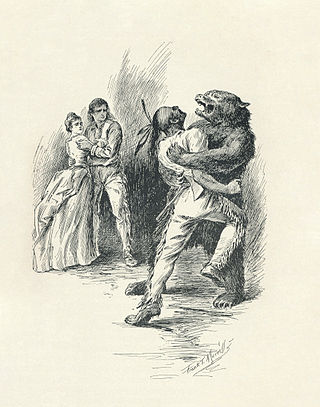
The Last of the Mohicans: A Narrative of 1757 is an historical romance novel written by James Fenimore Cooper in 1826.

The Jardin du Luxembourg, known in English as the Luxembourg Garden, colloquially referred to as the Jardin du Sénat, is located in the 6th arrondissement of Paris, France. Creation of the garden began in 1612 when Marie de' Medici, the widow of King Henry IV, constructed the Luxembourg Palace as her new residence. The garden today is owned by the French Senate, which meets in the Palace. It covers 23 hectares and is known for its lawns, tree-lined promenades, tennis courts, flowerbeds, model sailboats on its octagonal Grand Bassin, as well as picturesque Medici Fountain, built in 1620. The name Luxembourg comes from the Latin Mons Lucotitius, the name of the hill where the garden is located.

The Leatherstocking Tales is a series of five novels by American writer James Fenimore Cooper, set in the eighteenth-century era of development in the primarily former Iroquois areas in central New York. Each novel features Natty Bumppo, a frontiersman known to European-American settlers as "Leatherstocking", "The Pathfinder", and "the trapper". Native Americans call him "Deerslayer", "La Longue Carabine", and "Hawkeye".

The Deerslayer, or The First War-Path (1841) was James Fenimore Cooper's last novel in his Leatherstocking Tales. Its 1740–1745 time period makes it the first installment chronologically and in the lifetime of the hero of the Leatherstocking tales, Natty Bumppo. The novel's setting on Otsego Lake in central, upstate New York, is the same as that of The Pioneers, the first of the Leatherstocking Tales to be published (1823). The Deerslayer is considered to be the prequel to the rest of the series. Fenimore Cooper begins his work by relating the astonishing advance of civilization in New York State, which is the setting of four of his five Leatherstocking Tales.

The Pathfinder, or The Inland Sea is a historical novel by American author James Fenimore Cooper, first published in 1840. It is the fourth novel Cooper wrote featuring Natty Bumppo, his fictitious frontier hero, and the third chronological episode of the Leatherstocking Tales. The inland sea of the title is Lake Ontario.
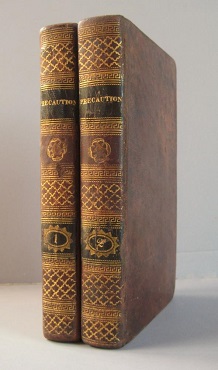
Precaution (1820) is the first novel by American author James Fenimore Cooper.

Louis-Charles-Auguste Couder or Auguste Couder was a French painter and student of Jean-Baptiste Regnault and Jacques-Louis David. He joined the Académie des beaux-arts in 1839 and was an officer of the Légion d'honneur. He married Cornélie Stouf, daughter of the sculptor Jean-Baptiste Stouf.
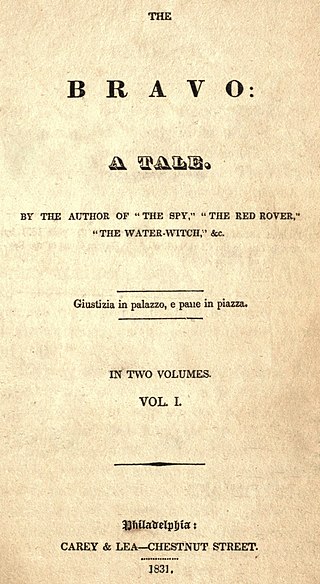
The Bravo is a novel by James Fenimore Cooper first published in 1831 in two volumes. Inspired by a trip to Europe where he traveled through much of Italy, the novel is set in Venice. The Bravo is the first of Cooper's three novels to be set in Europe. This group of three novels, which one critic would call Cooper's "European trilogy", include The Heidenmauer and The Headsman. Like his other novels set in Europe, The Bravo was not very well received in the United States. The book largely focuses on political themes, especially the tension between the social elite and other classes.

"Fenimore Cooper's Literary Offenses" is an 1895 essay by Mark Twain, written as a satire and criticism of the writings of James Fenimore Cooper. It draws on examples from The Deerslayer and The Pathfinder from Cooper's Leatherstocking Tales.
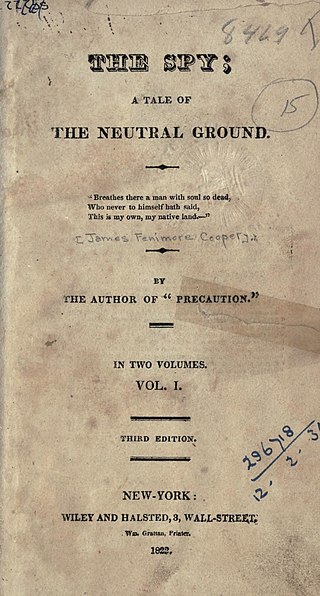
The Spy: a Tale of the Neutral Ground is a novel by American writer James Fenimore Cooper. His second novel, it was published in 1821 by Wiley & Halsted. The plot is set during the American Revolution and was inspired in part by the family friend John Jay. The Spy was successful and began Cooper's reputation as a popular and important American writer.
André-Nicolas Levasseur was a 19th-century French writer and diplomat known in the United States for accompanying the Marquis de La Fayette during his last trip to the Americas and in the Caribbean and Mexico for his involvement in French imperialism.

Jean-Baptiste-Auguste de Villoutreix de Faye was a French prelate of the Catholic Church. He served as the last Bishop of the Diocese of Oloron in France.

The Water-Witch is an 1830 novel by James Fenimore Cooper. Set in 17th-century New York and the surrounding sea, the novel depicts the abduction of a woman, Alida de Barbérie, by the pirate captain of the brigantine Water-Witch, and the subsequent pursuit of that elusive ship by her suitor, Captain Ludlow.
Autobiography of a Pocket Handkerchief is a serial novel by James Fenimore Cooper first published by Graham's Magazine in 1843. The novel explores the upper crust of New York Society from the perspective of a woman's handkerchief.

The Oak Openings; or, The Bee Hunter is an 1848 novel by James Fenimore Cooper. The novel focuses on the activities of professional honey-hunter Benjamin Boden, nicknamed "Ben Buzz". The novel is set in Kalamazoo, Michigan's Oak Opening, a wooded prairie that still exists in part today, during the War of 1812.
The Headsman: The Abbaye des Vignerons is an 1833 novel by James Fenimore Cooper set in Switzerland. The novel was inspired by one of Cooper's trips during his European travels in 1832. The novel is one of three of Cooper's "European" novels, following The Bravo and The Heidenmauer, all of which use the European setting to deal with socio-political contrast with American institutions.

The type of romance considered here is mainly the genre of novel defined by the novelist Walter Scott as "a fictitious narrative in prose or verse; the interest of which turns upon marvellous and uncommon incidents", in contrast to mainstream novels which realistically depict the state of a society. These works frequently, but not exclusively, take the form of the historical novel. Scott's novels are also frequently described as historical romances, and Northrop Frye suggested "the general principle that most 'historical novels' are romances". Scott describes romance as a "kindred term", and many European languages do not distinguish between romance and novel: "a novel is le roman, der Roman, il romanzo".